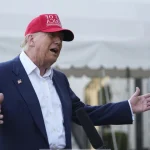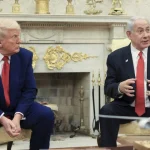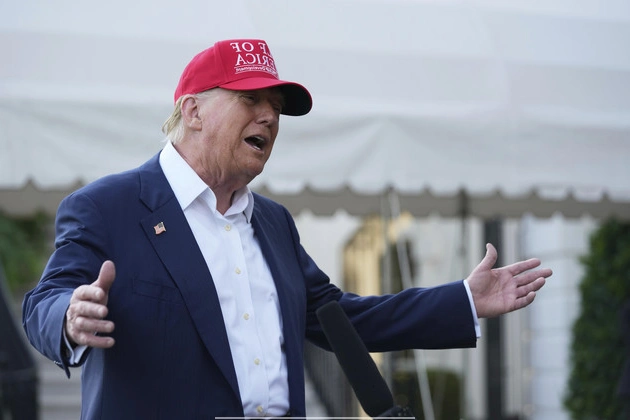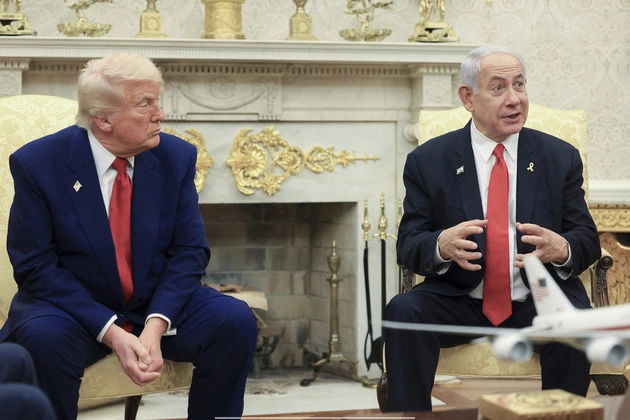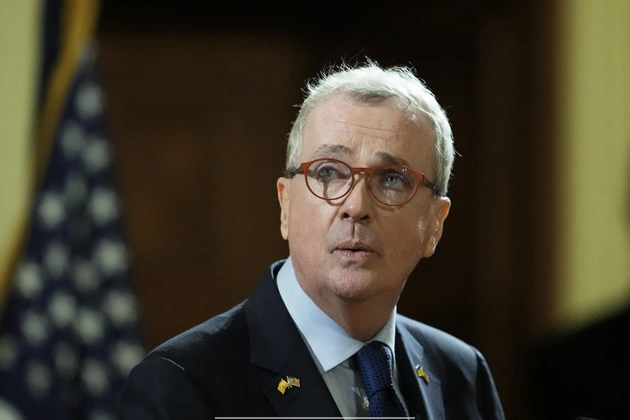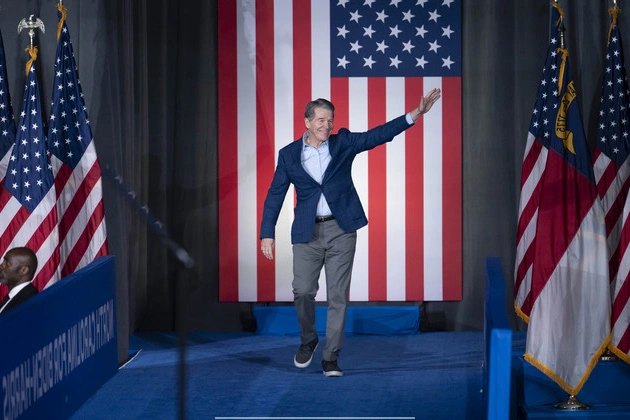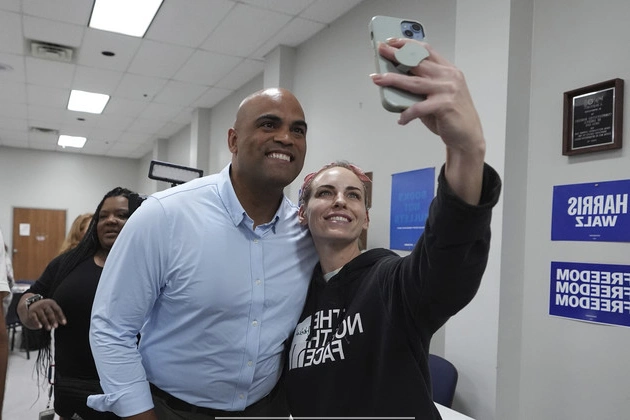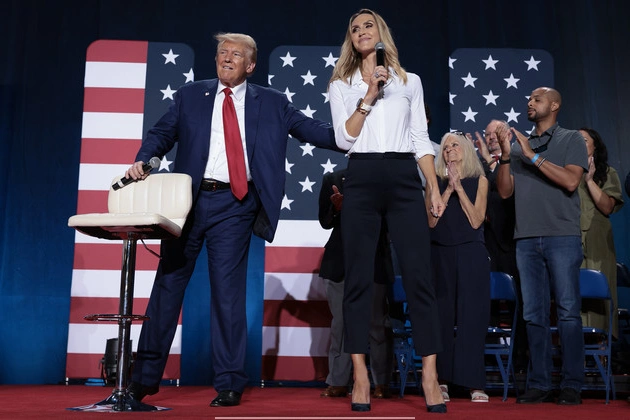
President Donald Trump bet that his 145 percent tariff on Chinese imports would bring Chinese leader Xi Jinping running to cut a deal on trade.
Instead, China responded by hitting back with tariffs of their own, ignoring Trump’s calls to open talks, and launching an international charm campaign to coax other countries to take on the U.S.
The Diplomatic Fumble
It’s a diplomatic fumble rooted in a fundamental miscalculation by Trump, who thought his tactics with Mexico and Canada would work with Beijing.
“They got the China piece of it very wrong and misunderstood what it would mean to really back China into such a corner with such extreme levels of tariffs,” said Emily Kilcrease, former deputy assistant U.S. trade representative during the end of Trump’s first term and the beginning of former President Joe Biden’s term.
China’s Response
The administration gambled that U.S. tariffs against China would swiftly result in an updated version of the U.S.-China Phase One trade deal that Trump sealed with Xi in 2020. That agreement included China’s commitment to massive purchases of U.S. goods and services that Beijing failed to honor. But China’s willingness to defy the tariffs and its decision to capitalize on the international anger at Trump’s trade policies has proven effective — at least so far.
Misconceptions and Expectations
Former high-level trade officials experienced with Chinese negotiation tactics said Trump’s expectation that Xi — like Mexico’s President Claudia Sheinbaum and now-former Canadian Prime Minister Justin Trudeau — would drop everything and pursue tariff relief was misplaced.
“Trump thought that China was a pushover and so he behaved like a New Yorker saying ‘let’s do a deal,’” said Harry Broadman, a former assistant U.S. trade representative in the George H.W. Bush and Bill Clinton administrations. “Whoever is advising him clearly does not understand China.”
Economic Realities
Those apparent misunderstandings include the administration’s belief that China’s reliance on exports as an economic motor would make Beijing eager to seal a deal favorable to the United States. But over the past decade, Xi has worked to cushion the Chinese economy from external trade shocks through policies to expand domestic consumption, and tightening relationships with more reliable partners in Asia, Africa and Latin America. The Chinese government signaled its determination to weather the impact of tit-for-tat tariffs by pledging on Friday to support local industrial sectors hard hit by the trade spat, per Reuters.
Xi traveled to Southeast Asia last week to forge closer ties with Vietnam, Cambodia and Malaysia. Chinese Foreign Minister Wang Yi made calls to his counterparts in the United Kingdom and the European Union with similar offers. And China’s ambassador to Canada, Wang Di, made a pitch on Wednesday for the two countries to team up to oppose “bullying” by the U.S, CTV News reported, capitalizing on widespread dismay at the Trump administration’s heavy-handed tactics.
Ongoing Standoff
As of Friday, the U.S. and China remain locked in a cycle in which Trump asserts that the White House is “actively” engaging Beijing on tariffs, followed by a swift denial by Chinese authorities.
Time Magazine published an interview with Trump on Friday in which he asserted that Xi had called him, though he declined to say when that call had occurred (the last known call between the two leaders was in January) or what they had discussed. Trump dodged reporters’ questions on the timing of that call later on Friday, saying, “I don’t want to comment on that, but I’ve spoken to him many times.” That ambiguity aligns with Treasury Secretary Scott Bessent’s assertion on Wednesday that U.S.-China talks on tariffs have not yet begun.
The White House didn’t respond to requests for comment. But China’s foreign ministry insisted communications between the two sides on tariffs are at an impasse. “China and the U.S. are not having any consultation or negotiation on tariffs — the U.S. should stop creating confusion,” Chinese Foreign Ministry spokesperson Guo Jiakun said Friday. The Chinese embassy in Washington posted Guo’s comments on X to hammer the point home.
Uncertainty and Speculation
Two people familiar with the status of communications between the White House and Beijing, granted anonymity because of the sensitivity surrounding talks, say it’s unlikely Xi and Trump have spoken directly since he unveiled his “Liberation Day” tariffs earlier this month. Both people said they suspected Trump had conflated lower-level Chinese outreach to administration officials with direct contact with Xi.
Meanwhile, the White House is grappling with the domestic fallout of the trade spat through a slew of dour predictions about its economic impact. That includes the International Monetary Fund’s warning on Tuesday that the tariffs will badly dent the global economy and risk a financial crisis. Predictions of a potential recession and the possibility of a fresh inflation surge have panicked the stock market, one of the indicators that Trump has historically watched most closely.
China’s Strategic Maneuvers
“Clearly China is relishing the opportunity to flex its economic muscle and to demonstrate that it has tremendous staying power, not least because it can absorb the political heat much more than Trump can,” said Marc Busch, who has advised both the U.S. Trade Representative and the Commerce Department on technical trade barriers and is now a professor at Georgetown University.
The Trump administration appears to genuinely believe it can still pressure Xi to the table. On Thursday, Trump suggested in a post on Truth Social that Boeing “default” China over its refusal to accept three of the airplane manufacturer’s planes, hinting at an escalation of rhetoric against a president who has spent the last couple of weeks showering Xi with flattery.
This week, Trump floated lowering the massive levies on China. But Bessent and White House press secretary Karoline Leavitt said Wednesday that he won’t do so unilaterally. In other words, the president needs to see some movement from Beijing before he budges.
An administration official, granted anonymity to speak candidly about strategy, said that movement could include China ending its practice of manipulating its currency, curbing state subsidies to manufacturers that keep export products’ prices artificially low and stopping the theft of U.S. intellectual property.
Path to Resolution
“We are not going to move the needle until they move,” the official said.
The Chinese government is willing to roll back tariffs on specific U.S. imports deemed essential to the Chinese economy, including pharmaceuticals, Reuters reported Friday. But it’s unclear whether Beijing is ready to broker a one-on-one meeting between Xi and Trump to fast-track wider tariff reductions and lay the groundwork for a new trade deal.
“They know Trump is in an untenable position and are letting the Energizer Bunny run down his batteries while they sit on the sidelines because they think they gain nothing by addressing him,” said Broadman. “Trump’s behavior is antithetical to the way they believe leaders should behave.”
The Way Forward
The White House has said repeatedly that “the ball is in China’s court” to end the current standoff. But Beijing’s reluctant to appear as if it’s yielding to U.S. pressure. That means the first step toward high-level talks will likely require Trump to make the first move through the kind of backchannel intermediaries trusted by both Washington and Beijing that he has so far sidelined.
“It could happen tonight,” said one of the people familiar with the status of communications between the White House and Beijing. “Trump calls somebody who’s close to the Chinese and says, ‘Let’s figure out a way that we can both simultaneously put out an announcement that we’re talking and nobody talks about who conceded to who.’”
